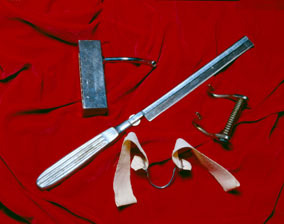Plastic Surgery
Plastic Surgery is the part of General Surgery that specializes in the treatment of patients with birth defects, defects resulting from trauma, or treatment of neoplasms. Plastic surgeons operate on the entire body, from the scalp to soles of the feet. Its primary aims are to improve function and appearance.
For centuries in Asia and Europe, plastic surgery had been performed to improve the appearance of patients mutilated by disease or by punishment for crime. During the past two centuries plastic surgeons have pioneered many innovative techniques that today are used in all of types of surgery:
- Repair of congenital cleft lips and palate.
- Use of split thickness skin grafts in the treatment of burns.
- Microsurgical techniques which allow direct repair of tiny arteries, veins, and nerves.
- Refined the anatomy of the blood supply to multiple tissue masses of skin, muscle, fascia and/or nerves, thus allowing immediate repair of a wide variety of surgical and traumatic defects in any part of the body.
- Transplantation of organs between humans.
- Repair of facial and jaw fractures.
Though Boston has always been considered a major center of American medicine, it is not widely known for its contributions to plastic surgery. But in fact, Boston has been the location of many "firsts" in plastic surgery.
John Collins Warren (1778-1856) and his son, J. Mason Warren (1811-1867) were early pioneers in cleft lip and palate surgery. J. Mason Warren performed the first rhinoplasties in North America.
The aesthetic talents and surgical skill of George Monks (1853-1933), after whom Boston's annual Monks Lecture in Plastic Surgery is named, was the founder and first president of the Boston Surgical Society. He published the first report of an axial vascular flap from the temporal area to replace an eyelid.
Varaztad Kazanjian (1879-1974), a critical figure in the establishment of plastic surgery as a separate surgical specialty, pioneered new techniques in the repair of maxillofacial injuries.
Research conducted by Bradford Cannon (b.1907) changed the way theAmerican military medical establishment treated burns during the Second World War.
Joseph Murray (b.1919) performed the world's first successful kidney transplant. Robert Goldwyn (b.1930) was the driving force behind the establishment of the National Archives of Plastic Surgery as the first (and only) major collection devoted to the documentation of the history of plastic surgery in the United States.
Plastic Surgery has been a critical part of the city's rich medical history and has contributed in its unique way to establish Boston as a vital center of American medicine.

